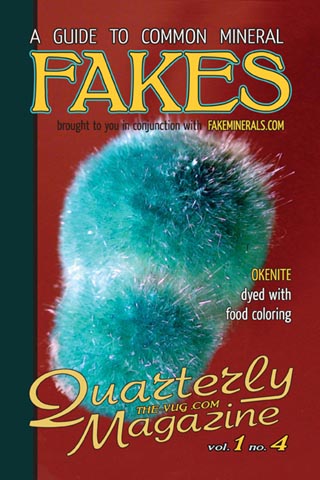Fake Crystals, Minerals, Gemstones, Lapidary and Fossils Guide
This page is a list of scams, fakes, forgeries and misrepresentations that appear in the mineral collecting market. Some of these fakes are well known classics; some of them are very recent. Nearly every purchaser of minerals, from the collector to the dealer, falls for a fake at some point in time.
It could be an Emerald crystal glued into a Calcite matrix and covered with mica at the base, or a green colored Glauberite/Calcite that is colored that way from a dip in a vat of copper solution.
The-Vug.com has been devoted to showcasing the best assortment of fake minerals online, nay, compiled anywhere. In fact, we are the people behind FakeMinerals.com and the Fakes issue of The-Vug.com Quarterly Magazine, which can be bought in the hardcover collection of all the issues of The-Vug.com Quarterly on THIS PAGE.
Questions or leads, email Justin(at)the-vug.com – We Love Photos!
For up to the minute info on fake minerals currently on eBay & the internet, make sure you check out our award winning website, FakeMinerals.com!
Most hoaxes can be broken down into the following subjects.
Man Made Crystals
Aluminium, Bismuth, chalcanthite, zircon, zincite
Coated Crystals
Aqua Aura, green quartz from China
Chemical Reaction to Crystals
“Malachite” pseudomporphs of Aragonite and Calcite,
Mechanic Alteration of Crystals
Hollow Galena Crystals, fluorite octahedrons, carved fluorite crystals, glued and repaired specimens
Irradiation of Crystals
Smoky Quartz, helidor, aquamarine
Heat Treatment of Crystals
Citrine, silver
Dyeing of Crystals
Agates, Howlite, Magnasite, Okenite, turquoise
Misrepresentation
Glass as obsidian, green quartz/serpentine as jade, localites, Chinese fluorite sold as charoite, uneducated sellers, Cal-Silica
Hoax
Diamond scams, azeztulite, white moldavite, gold scams, curtain rod aquamarines, charlatan dealers
Artisian products
“crafted specimens”
Man Made Crystals
Man made crystals are wonderful teaching tools, often made of elements that are not found in nature, or rarely as exciting as crystals created in a controlled environment. Alumium and magnesium from refining operations are often sold as natural crystals, as well as the supposed smokestack, but truly, lab grown, zincite crystals. Sulfur stalactites are sometimes sold as natural occurrences, yet, form on the side of pipes, precipitating out the element. Lab grown crystals of Zircon, Emerald, and Ruby are often sold as the real thing, embedded in matrix in some extremes. Gemstones known for a rare source for desirable hues find labs searching for ways to duplicated them, such as “Siberian” amethyst or “russian” ametrine. Some specimens, like the crafted Malachite stalactites from the D.R. Congo, contain copper wires inside, with a layer of malachite produced by man, with druzy malachite glued to the outside.
 |
 |
|
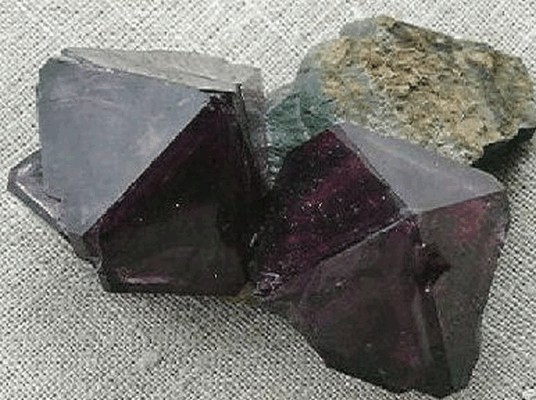 |
 |
Cermikite, a chromium alum, like many other lab grown crystals, are typically are labeled as such. The big bold colors and shapes of simple crystalized elements are what makes them desirable. |
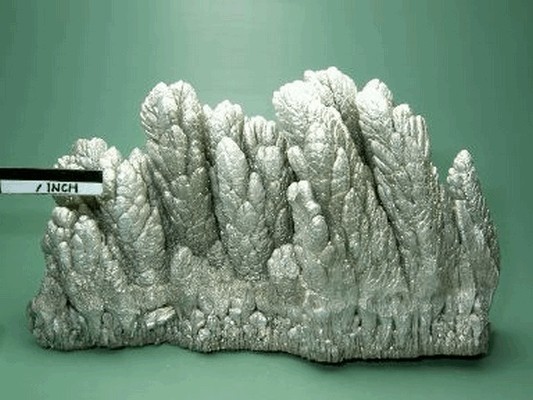 |
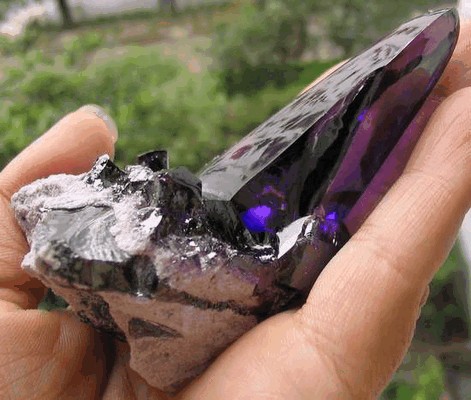 |
Magnesium, Nickle and many other elements are quick to crystallize under heat leaving samples that can be sold to uninformed buyers. |
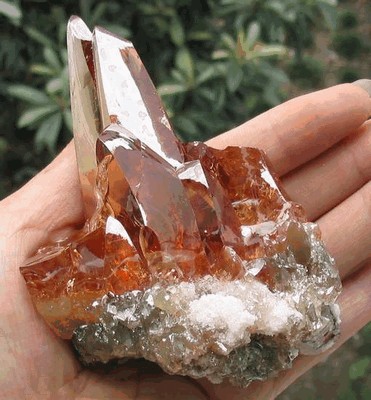 |
 |
Zircon Crystals were showing up for sale on eBay, labeled as natural crystals. See how the material they are grown with matches the color of the crystals? |
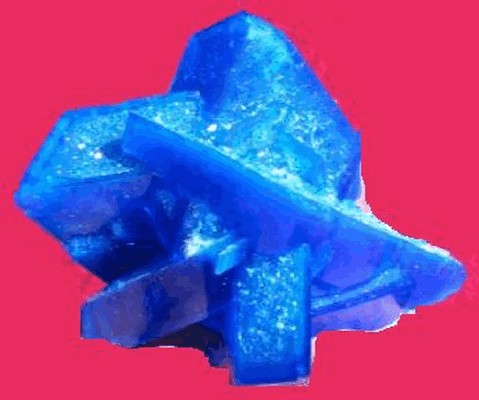 |
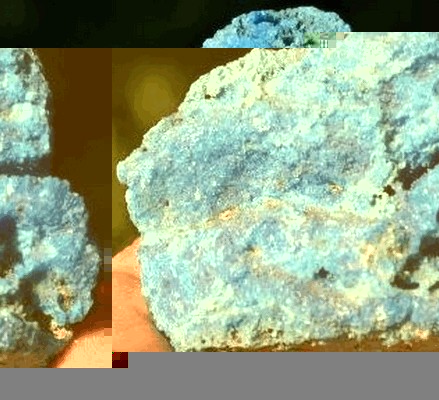 |
Chalcanthite is perhaps the most common lab grown mineral sold to unsuspecting and uninformed buyers. It is a natural by-product of copper mining, but also, rather easy to create. |
Coated Crystals
Coatings or treatments of crystals are common as a way to create new items to market. The world can only take so many quartz crystals, geodes, danburite crystals and zeolites. Years ago it was discovered that you could take a somewhat tough mineral and place it in a vacuum chamber and fuse it with an element in gas form. The result is a durable bond of elements such as gold, titanium, indium and iron oxide, to the surface of the crystal, giving it a beautiful sparkle and color. Gold creates blue, or Aqua Aura, indium produces a violet hue, titanium produces a opalescent white coating and iron oxide colors the quartz a predictable orange, with a vibrant sparkle. Most dealers are very up-front about the origin of these specimens and most buyers are not turned off by this fact. The crazy colorful sparkle is something that could not be found in nature for such a price! The other treatment of quartz was a Teflon coating, which created “jelly quartz” in all sorts of bright colorful hues. Electroplating and similar treatments can be used to fuse quartz with chromium and produce bright green quartz clusters.
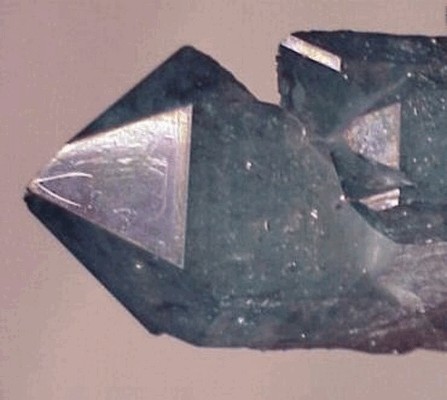 |
 |
Fusing vaporized elements with quartz and other minerals produces this unremovable coloring that is very popular. |
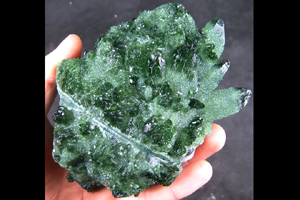 |
 |
Poor quality quartz clusters were found to be the perfect vehicle for elemental bonding, as these clusters show chromium and iron, for green and yellow. Purple clusters mimicing Amethyst are also found for sale. |
Chemical Reaction to Crystals
Chemical Reactions create all sorts of colorful results in crystals. The most common would be the results of Copper Sulfate, which makes colorless carbonates turn bright blue and green. The result is “pseudomorphs” of malachite after calcite and malachite after aragonite.
<
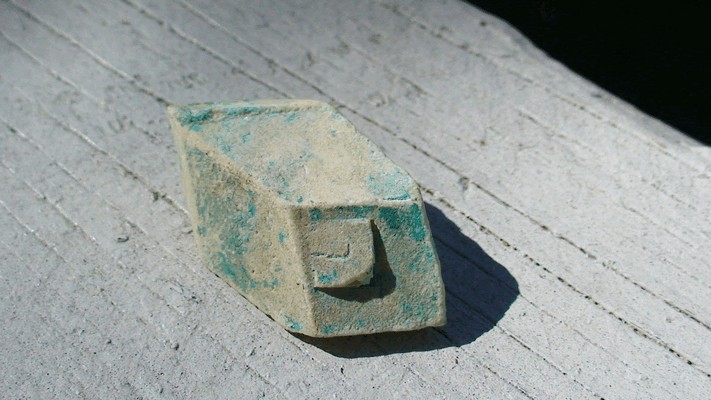 |
 |
Soaking calcite in copper sulfate can turn the crystals green, as to mimic a pseudomorph of malachite after calcite. |
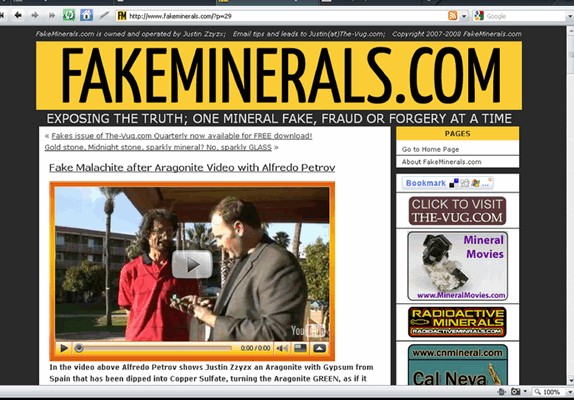 |
Alfredo Petrov showed Justin Zzyzx a specimen of Aragonite soaked in copper sulfate, which Justin obviously was overjoyed to witness first-hand in Tucson |
Mechanic Alteration of Crystals
Mechanical alterations are when someone takes a natural specimen and uses a tool to alter it in a completely un-natural way to produce a fake that is intended to be a natural find. Fluorite is often the victim to this, as the material is very soft and can be made into fluorite octahedrons by cleaving, then sold as natural crystals, or carved into spheres or crude crystals and sold as natural formed specimens. In the 2000’s there was a batch of galena crystals which were found to be the product of creative, aggressive, micro-abrasion. Some people unscrupousially take minerals from some locations and glue them onto matrix from other locations, or many times, their own local matrix in attempt to increase value.
 |
 |
Fluorite cubes can easily be trimmed to make nice clean fluorite octahedrons. It is also easy to carve, like this rounded cluster that was a popular scam in Europe around 2010. Galena is soft enough to sandblast and create semi-natural looking formations that were sold for a premium price. |
Irradiation of Crystals
Irradiation of mineral specimens is a fairly common thing, as it is simple to turn colorless quartz into deep black smoky quartz or take pale aquamarine and turn it into a vibrant golden helidor. With Quartz, the source of natural smoky coloration comes from radioactive sources in the formation and host rock. These natural smoky quartz crystals tend to retain their color when exposed to sunlight, where as irradiated crystals will fade fast when exposed to sunlight. People who sell Helidor from Tajikistan will swear on their mother’s good name that the material is natural, but many of the examples have been textbook representations of aquamarine deposits in Pakistan. Most blue topaz that is seen on the jewelry market is irradiated to bring out the deep blue colors.
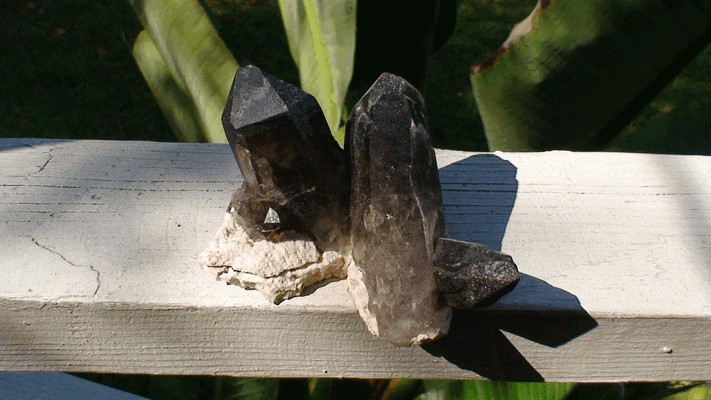 |
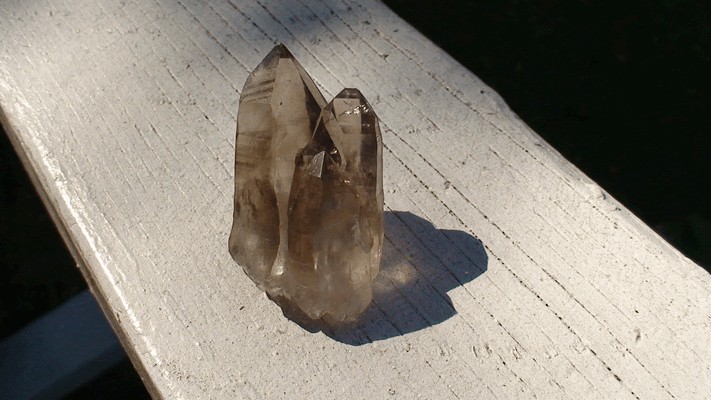 |
Both of these samples are natural smoky quartz. |
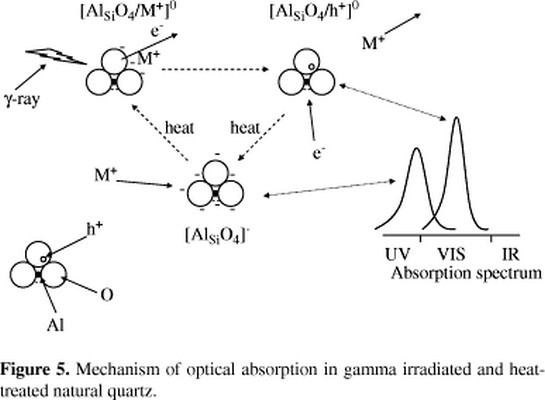 |
This illustration shows how radiation excites the aluminum molecules and causes them to produce the smoky coloring in Quartz. |
|
These two quartz clusters are from the same location in Europe. One of them is natural and the other has been irradiated. Notice how the color contrast between the dolomite and quartz is much more attractive on the irradiated specimen. |
||
 |
 |
The scam is simple. Take an aquamarine from pakistan, irradiate it, it will turn this rich cracked out yellow color and then you can sell it as a “natural” heliodor. The photo next to it is a natural heliodor/aquamarine crystal from Brazil. |
Heat Treatment of Crystals
Heat Treatment causes changes in crystal color that are sometimes necessary to make a mineral valuable as a gemstone. Tanzanite is a perfect example of heat treatment in a gemstone, as most of the crystals out of the ground have lots of brown hues in the crystal, which turn violet and blue when exposed to heat. The most common heat treatment of a mineral is Citrine, where the common purple quartz of rio de sol is cooked in a kiln to produce a rich reddish orange citrine color. These specimens can be found in examples all over the world as one of the most common treated specimens found at museum gift shops, truck stops, gem shops, mineral shows, metaphysical store, interior design stores and any other imaginable place you could find a brazilian agate or an amethyst geode. This photo is the perfect example of this in heat treatment in action, as half of the plate was broken in half, one side heated and the other side left natural. Together again, they show what heat can do to some minerals. Another quirky heat related fake can come from the heat applied to silver ore, acanthite, silver wires will precipitate out, and sometimes in a way that looks an awful lot like natural silver wires. The roasted specimens have a tail-tell roasted soot tarnish at the base of the crystals. The glut of Moroccan silver wires on matrix were seen to have these signs of roasting.
 |
This photo shows a plate of amethyst that has been split in two, with one side being heated to produce the orange color change, then, placed back together. The plate is quite eye opening with the two colors of citrine and amethyst. |
|
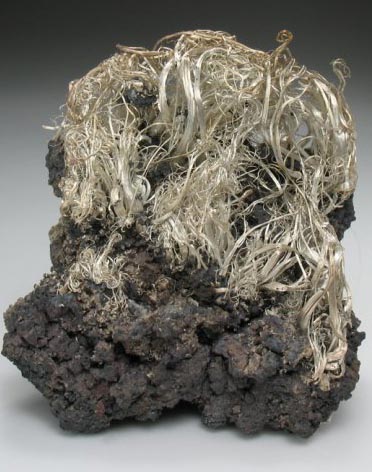 |
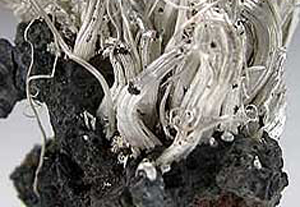 |
These silver wires very well may have been formed by simply heating the raw acanthite ore, causing the natural silver to form into wires and emmit forth from the mass, creating these man made heated silver specimens. |
Dyeing of Crystals
Dye plays a role in mineral fakes, as many rocks would not sell readily en mass as drab clear, colorless and light brown/gray rocks. With several ways of processing, agates from Brazil can be dyed to green, blue, red, black and purple quite readily. One of the main reasons for coloring a mineral can be the lack of contrast. In the case of the uncommon mineral Okenite, the white puffballs on white quartz matrix did not have much contrast, but the okenite would draw in food color willingly, making colorful blue and yellow okenites a common sight on eBay. Howlite was a very common material from southern California, commonly dyed blue to mimic turquoise. Now, as howlite has become scarce, magnasite from Africa is being marketed by Chinese lapidaries as howlite.
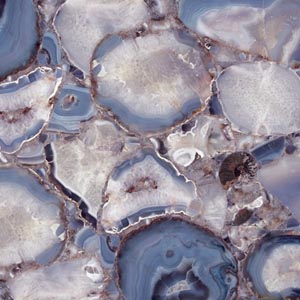 |
 |
Dyed agates are very common, making these various shades of blue, orange, green brown and pink to grace bookshelves and windchimes the world over. |
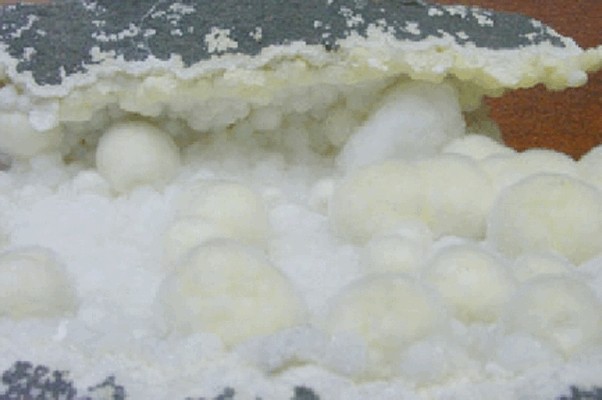 |
 |
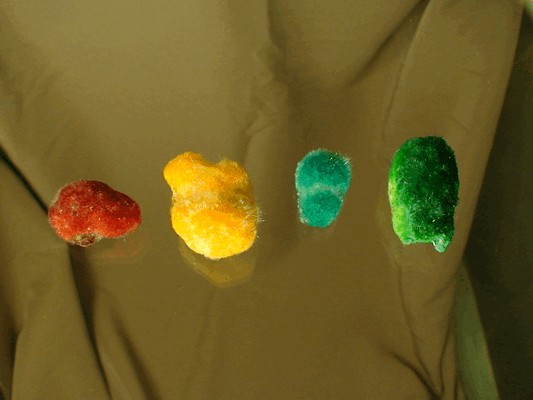 |
 |
Okenite clusters are popular for their fluffy white crystals, however, the matrix is typically white, providing no contrast. |
The simple solution is to add a bit of food color dyed water to the okenite, coloring it any shade of the rainbow! |
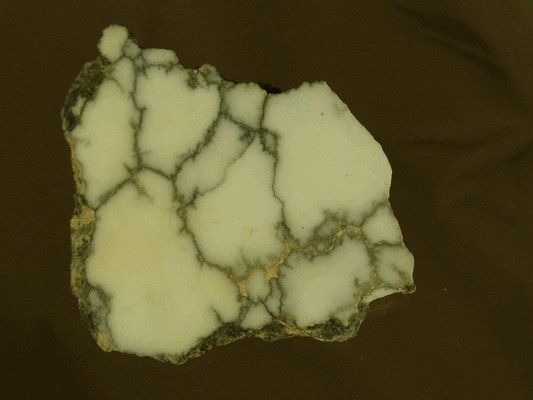 |
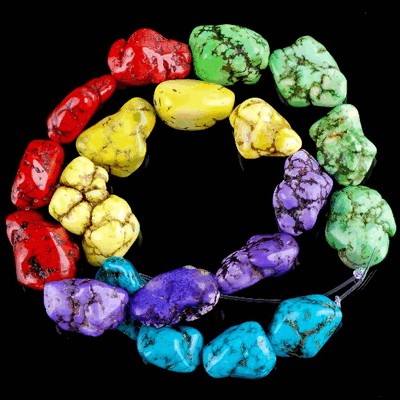 |
The white mineral Howlite is popular for dyeing, as it mimics turquoise with the black webbing. |
 |
 |
Turqouise from China is a risky purchase, as much of it is clumps of gypsum plaster dyed to the blue color that often passes for turqouise. |
Misrepresentation
So many other fakes can fall into the category of misrepresentation. The most common of all would be switching localities, saying that a specimen comes from a more desirable or uncommon locality. A classic example from the early 1900’s notes that Amethyst from Maine were labeled as coming from Brazil, in order to make it more valuable, when quite the inverse would be true now. Misrepresentation comes in the form of items labeled as things that they are not, such as brightly colored glass being sold as obsidian. Simply put, obsidian comes in earthy colors, dark in nature. Colors such as blue, green and red are simply not available because the earth did not produce them in any form suitable for lapidary use. Jade is seen as a valuable gem stone, so gem serpentine minerals such as antigorite, are often labeled “New Jade” and passed off as a replacement for jade. In the world of jade beads, all sorts of plastic, green quartz and serpentine are sold as jade. A lapidary stone called “Cal-Silica” has been sold as a natural stone, but it is clearly comprised of car paint. Chinese stone factories are often sending out stones that are not what they are labeled. A purple, white, orange and black fluorite/quartz/iron mix is being marketed as “chinese charoite” and red glass is being sold as polished red quartz.
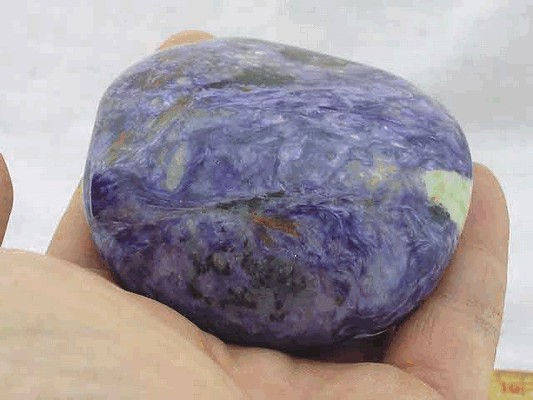 |
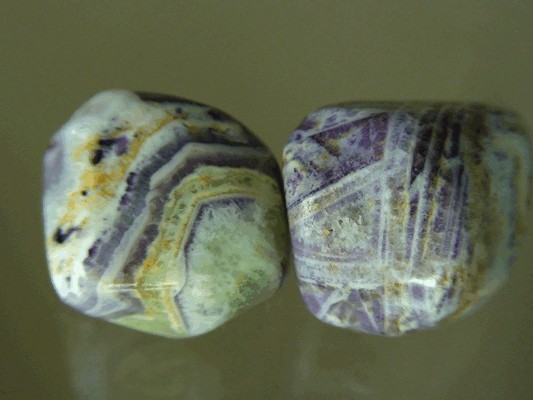 |
Chinese fluorite is being sold as Charoite, weakly mimicing the swirly natural purple material only from Russia. |
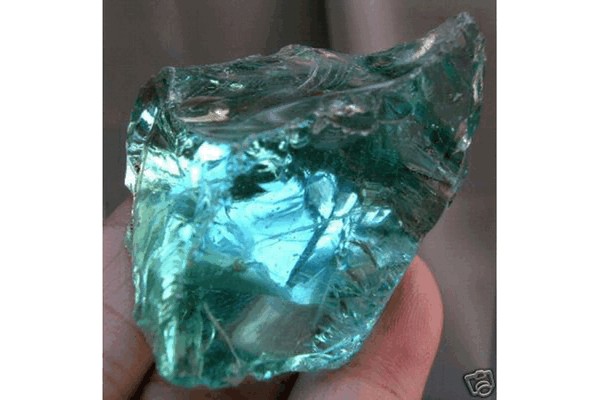 |
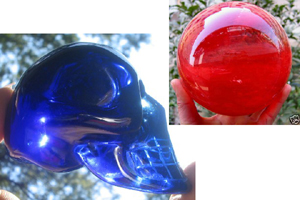 |
Colored glass is often passed off as natural obsidian. |
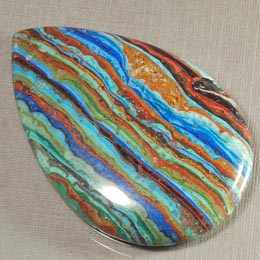 |
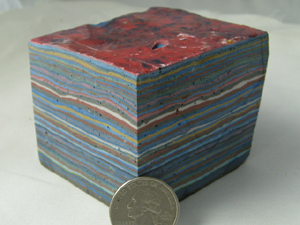 |
Rainbow Cal-Silica is simply car paint. Layer by layer it dries and forms a mass that can be cut and polished into beautiful cabochons. |
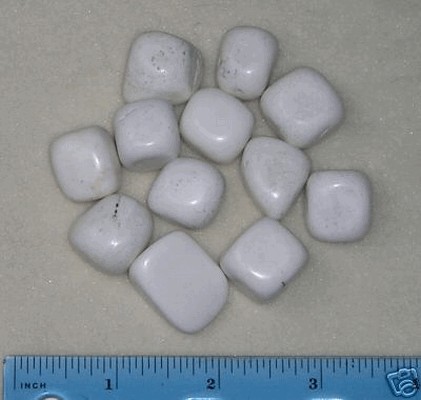 |
Now that the supply of Howlite is coming to an end, a replacement had to be found and it was in the form of this boring magnasite from botswana, sold as Howlite. |
Hoax
Another form of fakery in the mineral community comes from outright hoaxes. Diamond scandals always used to either be about fake salted locations used to swindle investors out of money for a mining project that would never materialize, to a diamond stimulant or topaz being passed off as a diamond. But, a more complex hoax involved the taletell diamond crystals of the Crater of Diamonds state park and their unique look. One person figured out that diamonds from the Panna Mine in India looked SIMILAR, so, he ordered a bunch of raw diamonds from India and took them to the Crater of Diamonds state park, pretending to find them and get them certified as real Arkansas diamonds, worth 20x the price of diamonds from India. He would have gotten away with it if someone had not contacted the original vendor of the diamonds from India for photo comparisons. You can read all about it on FakeMinerals.com or in the Fakes issue of The-Vug.com, reprinted in hardcover along with 15 other issues of The-Vug.com, available on this page. Another hoax similar to the diamond scam is when people take gold leaf and apply it to the outside of some quartz rocks, selling it as gold ore. The biggest forgivable hoax would be the entire metaphysical market, with the needle going towards the unacceptable when it comes to trademarked minerals. On one hand, they are simply woven stories, told to entertain. You certainly can not read the things that are said about Azeztulite or Atlantispar with a straight face, the real problem is that you are taking a mineral, like Quartz, with a value that is negligible, and selling it for the price of fine gem stones. Named metaphysical stones are priced at a premium for the sole reason that they have a story attached to them.
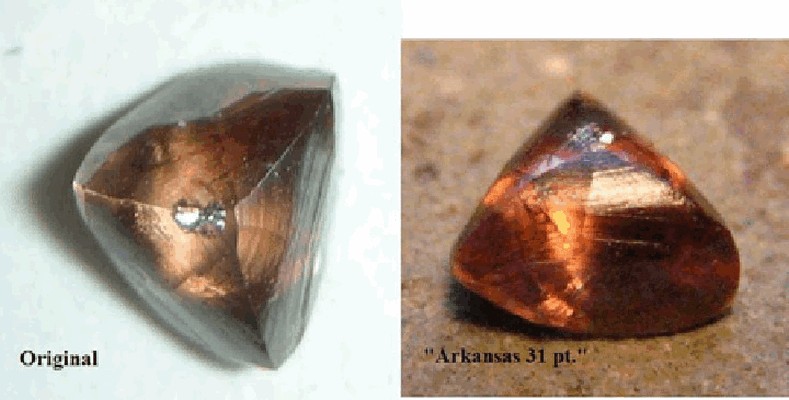 |
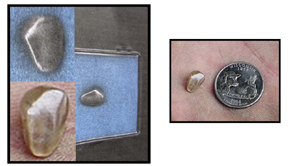 |
The Arkansas Diamond fraud is too crazy a story for this few words. Read about iton FakeMinerals.com |
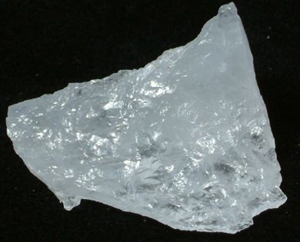 |
 |
Metaphsyical studies are not what we considert to be fraudulant, yet, the sales of stones that have a value only based on the story that is attached to them puts them in the realm of hoaxes, like this azeztulite and this “white moldavite” |
Artisian products
And finally, the most unique kind of “fake” is the artesian products of miners and people living in mining towns around the world. Cemented quartz crystals in a flowery cluster, pyrite chispas piled on top of flower pots. One of my favorites was a tower of brown tourmaline crystals stuck in a towering stalactite of black tar matrix. It is a unique difference in cultural perception that fuels these items, making them, perhaps, the most desirable of all these items listed.

